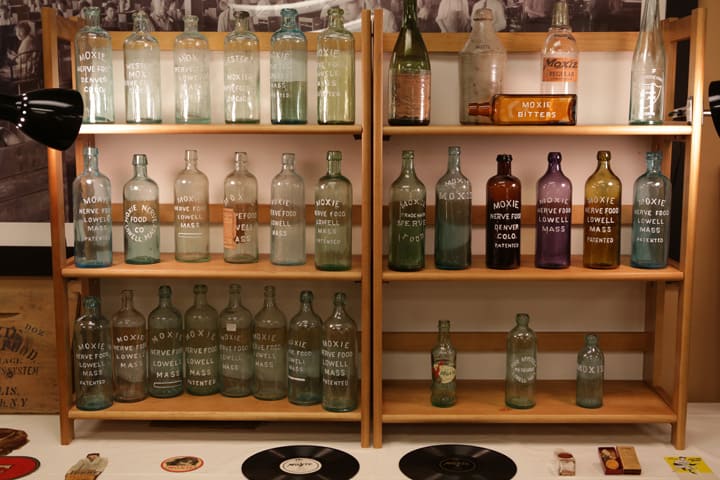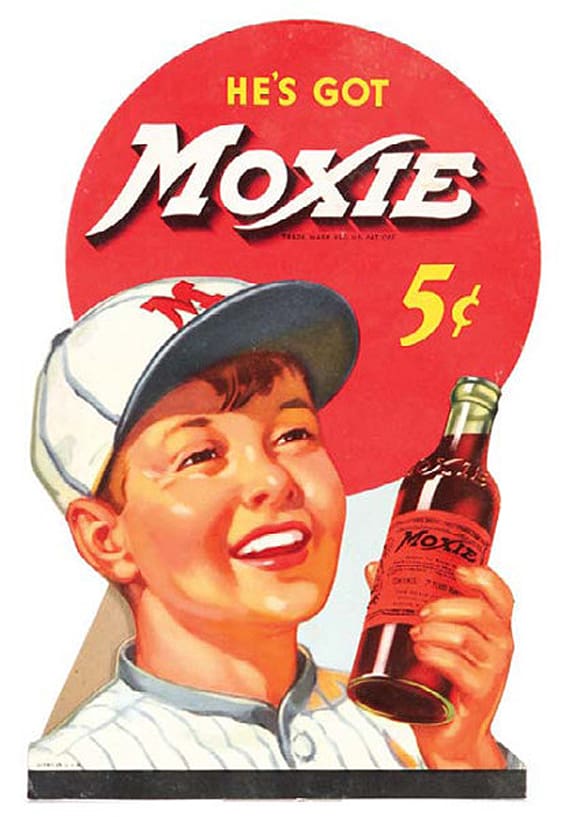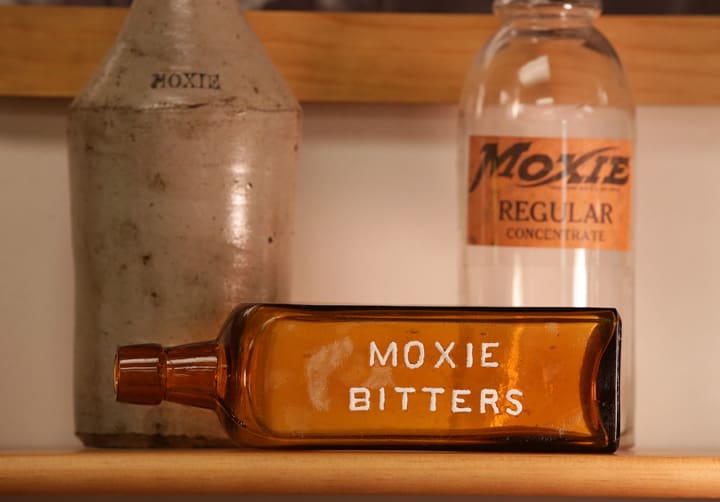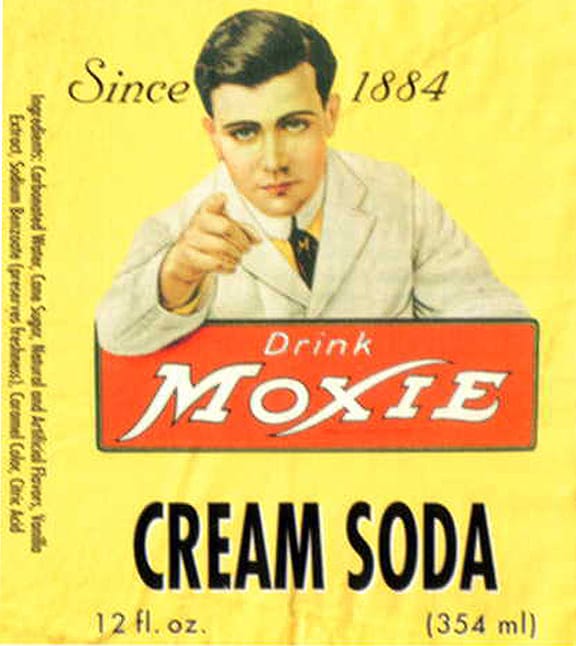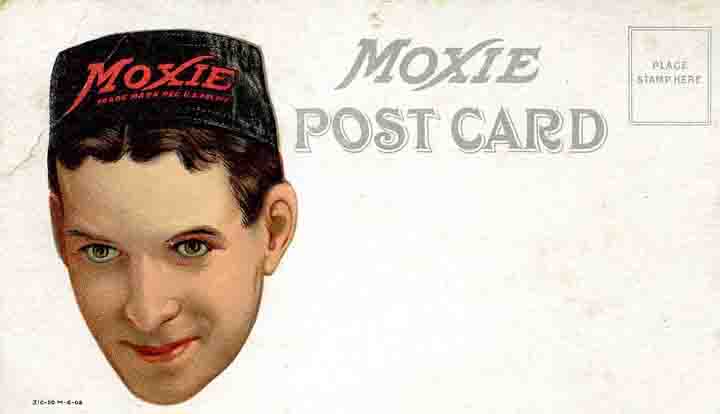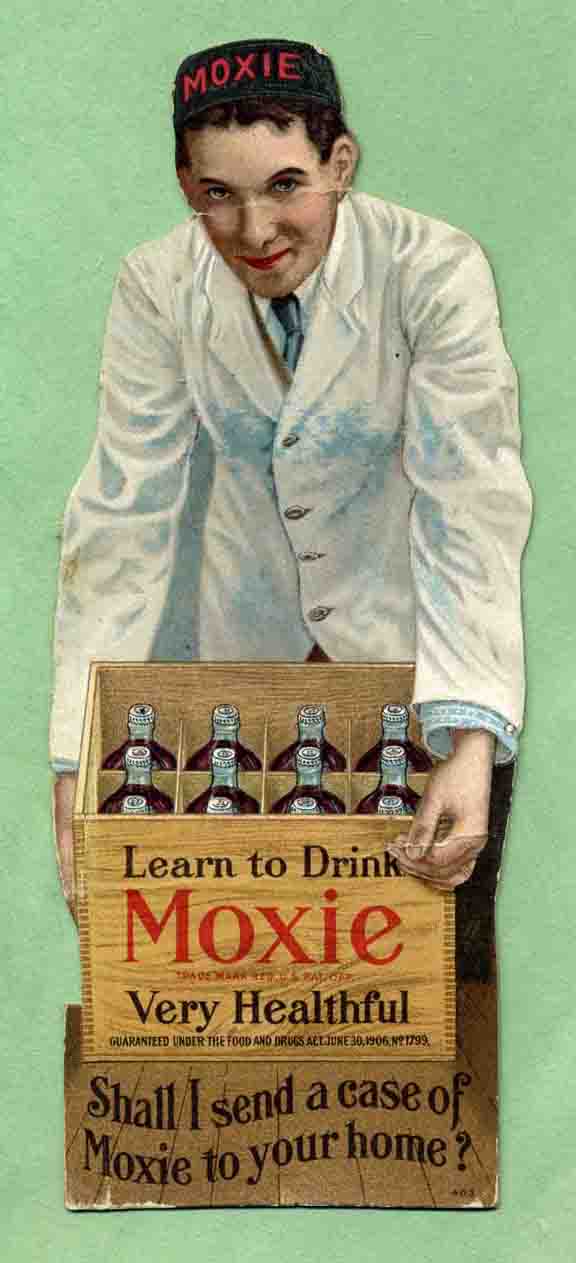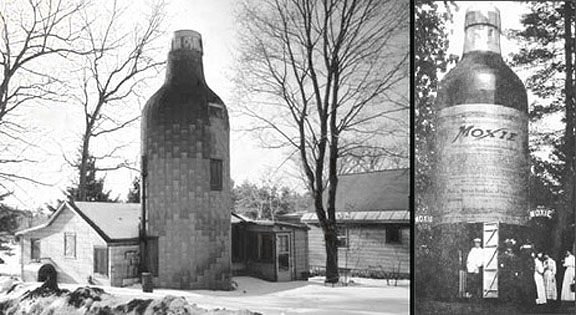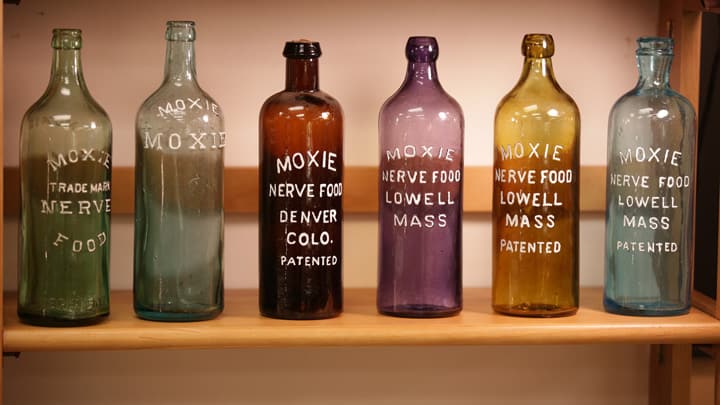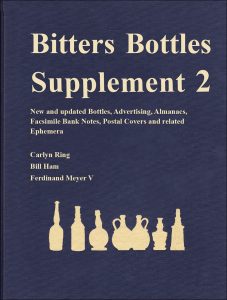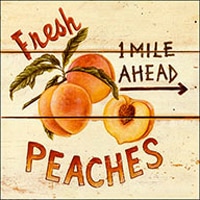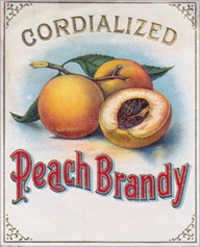Moxie Bitters – So What is Moxie?
![]() I was pleasantly surprised to see an extremely rare, Moxie Bitters within the Moxie Bottles display by Dave Waris at the FOHBC 2013 National Antique Bottle Show in Manchester, New Hampshire this past weekend. A real treat for this bitters collector. The bottle stuck out like a sore thumb to me. So what is Moxie?
I was pleasantly surprised to see an extremely rare, Moxie Bitters within the Moxie Bottles display by Dave Waris at the FOHBC 2013 National Antique Bottle Show in Manchester, New Hampshire this past weekend. A real treat for this bitters collector. The bottle stuck out like a sore thumb to me. So what is Moxie?
So what is Moxie?
The word moxie has become a slang term that means “courage, daring, or spirit.”
The Carlyn Ring and W.C. Ham listing in Bitters Bottles is as follows:
M 156 MOXIE BITTERS
MOXIE / BITTERS // f // f // f //
9 1/2 x 2 1/2 (6 1/2)
Square, Amber, LTC, Applied mouth, Extremely rare
What is Moxie?
Moxie is a carbonated beverage that was an early example of mass-produced soft drinks in the United States. It continues to be regionally popular today. Moxie’s flavor is unique, as it is not as sweet as most modern soft drinks and is described by some as “bitter.” Moxie is flavored with gentian root extract, an extremely bitter substance which was reputed to possess medicinal properties. Moxie is closely associated with the state of Maine and was designated the official soft drink of Maine on May 10, 2005. Its creator, Dr. Augustin Thompson, was born in Union, Maine, but Moxie was invented and first produced in Lowell, Massachusetts.
Moxie History
Moxie originated as a patent medicine called “Moxie Nerve Food,” which was created around 1876 by Dr. Augustin Thompson in Lowell, Massachusetts. Thompson claimed that it contained an extract from a rare, unnamed South American plant, which had supposedly been discovered by a friend of his, Lieutenant Moxie, who had used it as a panacea. Moxie, he claimed, was especially effective against “paralysis, softening of the brain, nervousness, and insomnia.”
After a few years, Thompson added soda water to the formula and changed the product’s name to “Beverage Moxie Nerve Food.” By 1884 he was selling Moxie both in bottles and in bulk as a soda fountain syrup. He marketed it as “a delicious blend of bitter and sweet, a drink to satisfy everyone’s taste.”
A lawsuit was filed in 1907 by the Moxie Nerve Food Company of New England against the Modox Company and others, alleging that they had copied the ingredients of Moxie and were using the name “Modox,” which closely resembled “Moxie,” and were infringing upon patents and trademarks. The suit was dismissed by the judge, who said the court could not protect the legitimate part of the plaintiff’s business in this case. In a later case in New York, the Moxie Nerve Food Company won a lawsuit against Modox, which subsequently went out of business.
President Calvin Coolidge was known to favor the drink, and Boston Red Sox slugger Ted Williams endorsed it on radio and in print. The company also marketed a beverage called “Ted’s Root Beer” in the early sixties. Author E. B. White once claimed that “Moxie contains gentian root, which is the path to the good life.” Currently, one of the ingredients of Moxie is “Gentian Root Extractives” which may contribute to the drink’s unique flavor.
The brand suffered a significant decline in sales during the 1930s, which is thought to have been caused by the company’s decision to expand its sugar reserves at the expense of its popular advertising campaign.
The Catawissa Bottling Company in Catawissa, Pennsylvania, is one of six bottlers in the United States that produce Moxie. Catawissa has produced it since 1945. Polar Beverages also bottles Moxie in Worcester, Massachusetts. [Wikipedia]
Read More: Moxie Bottle Stand (Manchester, NH)
Read More: Moxie Bottle House
All Moxie bottle photographs from the Moxie Bottle display by Dave Waris at the 2013 Manchester Nation. Photography by Scott Selenak (FOHBC show photographer).

